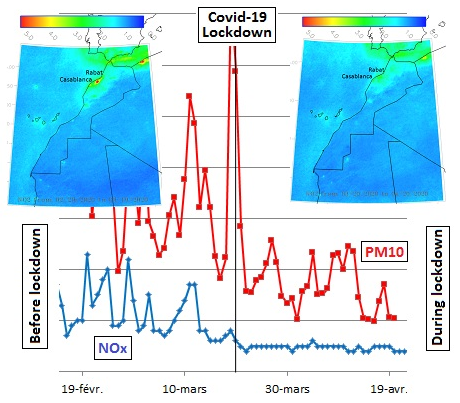-
Topic
-
VolumeVolume 22 (2020)
-
Issue
-
Pages348-353
- gnest_03431_published.pdf
-
Paper IDgnest_03431
-
Paper statusPublished

The effect of restricted human activities due to the COVID-19 pandemic in Rabat city (Morocco) was studied, by analysing data of five criteria pollutants (NO, NO2, PM2.5, PM10, and O3) to highlight the effectiveness of restricted emissions on air quality. Overall, drastic reductions on NO (up to −94%), NO2 (up to −51%), PM2.5 (up to −45%), and PM10 (up to −53%) concentrations were observed during lockdown period compared to the first period (before lockdown). Spaceborne NO2 column observations from TROPOMI on board Sentinel‐5P, reveal unprecedented NO2 decreases (up to −60%). By contrast, an increase of approximately 20% in ozone mean concentrations was observed, probably related to the reduction of nitrogen oxides and also of fine particles (PM2.5) which leads to less scavenging of HO2 and as a result greater O3 production.
Total file downloads: 3